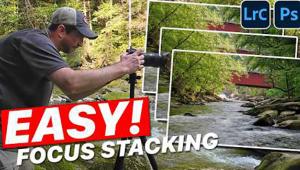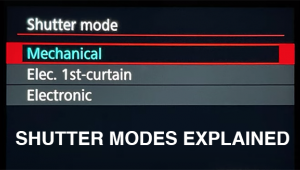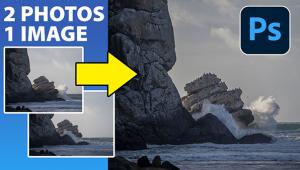New Gear For 2007: PMA Report; Scanners
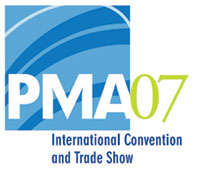 With so much digital in evidence, you'd think scanning would be a hot area at PMA. At least, I was hoping it would be. There's a big gap in the middle when it comes to ways to get your film into the digital realm. You've got the low end, typically a normal flat-bed scanner that's optimized for reflective scans and does a mediocre job of scanning transparencies and negatives, and the high end, dedicated film scanners capable of amazing quality, but often with a price tag to match.
With so much digital in evidence, you'd think scanning would be a hot area at PMA. At least, I was hoping it would be. There's a big gap in the middle when it comes to ways to get your film into the digital realm. You've got the low end, typically a normal flat-bed scanner that's optimized for reflective scans and does a mediocre job of scanning transparencies and negatives, and the high end, dedicated film scanners capable of amazing quality, but often with a price tag to match.
It's with mixed emotions that I report that things haven't changed much this year. Mixed because while there weren't many new products on display, those that were available are producing quality that even a couple of years ago would have been much more expensive to obtain.
I'm not going to report on any of the All-In-One units. These devices serve as printer, fax machine, and scanner. While they obviously have a place, producing high-quality scans from film isn't on the list. That's not to say that flat-bed scanners as a whole aren't worth considering. If you have mixed needs, these can often do the job well enough, and in some cases very well.
HP is pushing the quality bar up with a significant cost reduction with the newest Scanjet G4050. The scanner has a built-in adapter for slides and negatives--16 in 35mm format, two in 120, or a single 4x5. HP has included a dust and scratch removal system to the scanner along with a restoration, redeye removal and enhanced shadow reproduction for those times when you don't want or need to work on an image directly. What sets the G4050 apart from other scanners in this range is the increase from three to six colors, which produces a 96-bit scan, and hardware resolution of 4800x9600dpi. Most scanners use a red/green/blue system to scan color documents. The Scanjet adds a second three-channel lamp which does improve color fidelity by an impressive amount.
 |
|
|
The dust and scratch removal works better than most systems I've seen because it uses a second scanning pass with an infrared LED to map defective areas of the film. This works very well on many types of film, but not with Kodachrome or black and white.
The Canon CanoScan 8600F is the latest in Canon's line to support both flat-bed reflective scanning and film or negative scanning with the built-in transparency unit. The scanner has a 4800x9600dpi hardware resolution and can scan up to 12 35mm negatives or slides at one time, and includes Canon's image correction software to reduce dust and scratches, redeye, and restore color.
At Microtek the newest model is the ArtixScan M1. The M1 has 4800dpi with a 48-bit scanning capability to pull detail from dense negatives. Film holders for 35mm, 120/220, and 4x5 film are included as is a suite of software that includes the excellent SilverFast scanner software. Microtek still offers their film scanners, the ArtixScan 120tf (35mm, XPan, and 120) and the ArtixScan 4000tf (35mm).
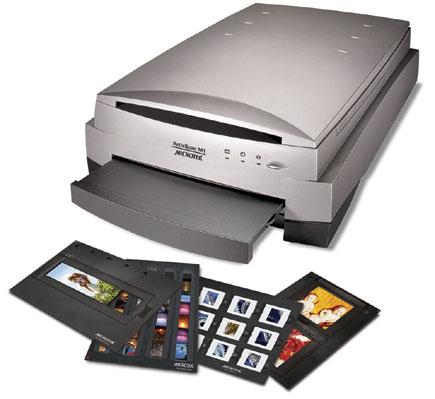 |
|
|
At the high end of both price and quality, Hasselblad has two new Imacon scanners out--the Flextight X1 and the Flextight X5. The X1 scans at up to 6300dpi with an amazing D-max of 4.6. For batch scanning, a holder for up to six images is included. And, different from other scanners, the Flextight series delivers your images as raw files rather than TIFFs or JPEGs. The advantage is that you can make adjustments to the scan without going through the process of rescanning your film. The Flextight X5 increases the resolution to 8000dpi and the D-max to 4.9 and includes a batch feeder that holds up to 50 slides. When you consider the resolution and file sizes you'll be dealing with, having the ability to batch these overnight can be a huge time savings. Both Flextight scanners include auto frame detection and autofocus, making them easier to use than earlier drum or other high-end scanning devices.
 |
|
|
The Truth About Resolution
When you're looking at scanners, you'll often see some insanely high numbers for the resolution. As an example, Canon (not to pick on Canon, but just to illustrate the point) can scan at up to 19,200dpi. These numbers are done via interpolation--just like
re-sizing an image in Photoshop, the scanner software is making up information to achieve these high numbers. The only numbers that are important are the hardware resolution figures. These will likely be something like 4800x9600, 4000, etc. This is the true scanning resolution, and along with the D-max rating, should be the most important specifications you consider.
Manufacturers/Distributors' addresses can be found by visiting the Instant Links section of our website at: www.shutterbug.com/currentissuelinks/.





























